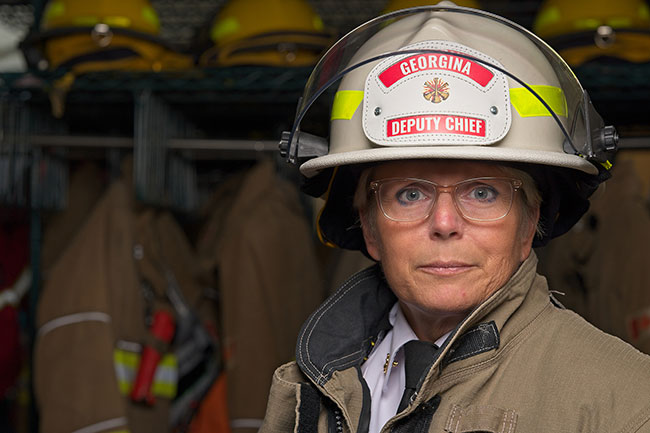
Features
Prevention
Community risk reduction: Where do I start?
August 23, 2023
By Lorianne Zwicker
 Lorianne Zwicker
Lorianne Zwicker Many challenges face the fire service, and one of them is the nearly overwhelming task of keeping up with the changing times. Technology is advancing at an exponential rate. Demographics change entire communities in a few months versus decades. And the collection/transfer/use of data has exploded into everyone’s daily lives, changing how we can look at the communities we serve in real-time. The reason “why” we do things may not have changed very much over the course of time. The “how” is constantly evolving.
For years, the Canadian fire service has primarily focused on fire prevention to reduce loss of life and property. We would inspect businesses through code enforcement and provide education to the residential areas of our communities. While the message was the same every year, we created new ways to get the message out there to the residents using a blanket approach.
Then, Community Risk Reduction (CRR) started to move forward. We now had data showing where the fires occurred, where violations were recorded and what types of violations were found. This data, however, is only the beginning in knowing our communities. Knowing our community and the residents we serve is key in building a CRR Plan. It all starts with creating the Community Risk Assessment (CRA).
The structure or cycle of the CRR, as noted in the Vision 20/20, is Risk Identification, Risk Prioritization, Resource Investment and Evaluation. In a more simplistic way to view the CRR, we are opening the fire station doors, taking an in-depth look at our community and its residents, determining the risks, going out in target areas to help reduce the risks and then evaluating our results.
Sounds simple, right? Well, not always the case.
Larger municipalities may have funding for programs, however, the municipality is so large it can be challenging to get the coverage needed for messaging. Smaller communities could have the ability to get the messaging across, however, many lack the funding needed to create targeted programs.
Risk Identification is the first structure element in your CRR. By identifying the risks, you are creating your community risk assessment. Some municipalities may choose to hire an outside consultant to create their CRA, but this will provide you with an assessment only. You will need to take all of that information to build targeted messaging programs that will speak to the risks and needs, and then ensure you evaluate how that messaging has impacted the community.
Whether you go with a consultant or you choose to create one on your own, the result is the same. You must determine how to get the message out there by building programs (target messaging), building partnerships and then determining if it is creating results through evaluation and revise when needed.
Fires are a risk, however, not the number one risk in many communities. Your community may have an increased risk of flooding, trips and falls or power outages. How you will structure and prioritize your risks and needs is up to you.
So…where do you start? In Ontario, we build it through nine pillars: Geographic Profile, Building Stock, Critical Infrastructure, Demographics, Hazard Profile, Public Safety Response, Community Services, Economic Profile, and Past Loss and Event History.
All of the information needed above can be acquired through your municipal Geographic Information Services (GIS), Municipal Building Department, fire department call data, your Hazard Identification & Risk Assessment (HIRA), Municipal Economic Development Department and Statistics Canada. Be prepared — there will be a lot of information to go through. Organization will be an essential key in preparing your assessment. As you are building your CRA, remember to keep all members of the fire service aware and involved where needed. As you assess your community, you are also assessing your fire service. Your resources, current programs and strategic direction pave the way for the future and continuous improvements.
There are different ways to build your CRA, but the main ones are paper or live data. Georgina Fire & Rescue Services chose a live data version. You can reach out to lzwicker@georgina.ca for a demo. Continue to collect your data and watch for the next article on risk prioritization.
Lorianne Zwicker is a deputy fire chief with Georgina Fire & Rescue Services. Developed the first live data Community Risk Assessment and Community Risk Reduction Plan in Ontario. She was previously with Barrie Fire & Emergency Service as chief fire prevention officer and lead on the crew assessments for Risk Reduction and with Toronto Fire Services as captain in Training with the creation of the Operations Based Re-Inspection Program. Zwicker is a professor at Seneca College and an OFC Adjunct Instructor holding CMMIII designation with enhancements in Fire Prevention Professional and Fire Services Professional.
Print this page
Advertisement
- Firefighter attends citizenship ceremony while on front lines of B.C. wildfire
- Halifax studying ways to better protect at risk neighbourhoods from wildfires